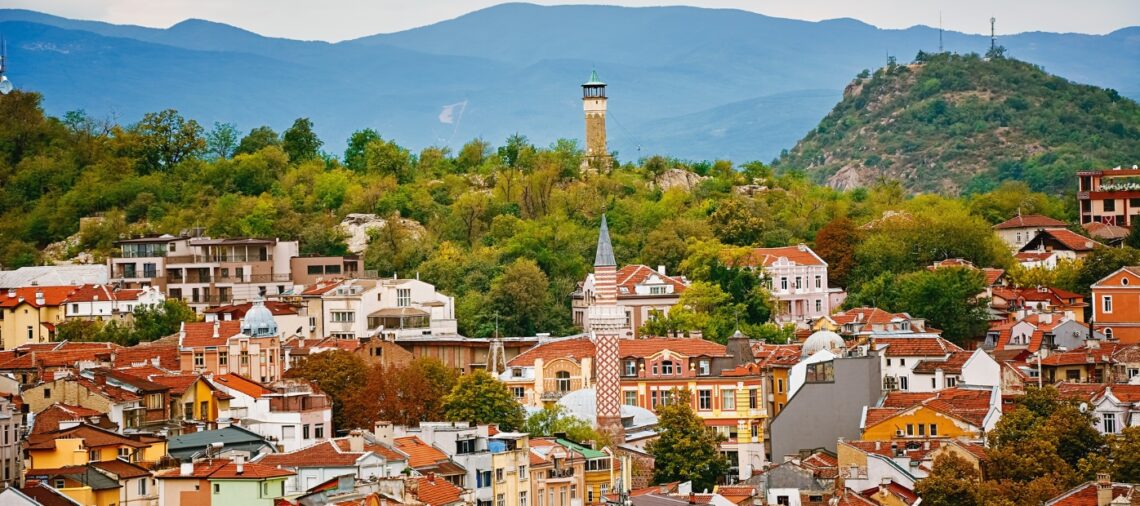Plovdiv, the historical city nestled in Bulgaria, holds an esteemed title – it is the oldest continuously inhabited city in Europe. With a remarkable history dating back to the 6th millennium BCE, Plovdiv stands as a testament to the rich heritage of the ancient world. As you wander through the stone streets of this ancient city, you’ll be transported through time, encountering the remnants of Thracian settlements and the echoes of Roman conquerors. Plovdiv’s significance as a cultural and historical hub has earned it a place amongst the most cherished destinations for avid history enthusiasts and cultural explorers.
Uncovering the Historical Layers of Plovdiv
Plovdiv’s history can be traced back to its Thracian origins. The Thracians initially settled the city in the 6th century BCE, and evidence of their civilization can still be seen in the archaeological sites scattered throughout the region. The Thracian civilization left its mark on Plovdiv, showcasing its ancient roots and adding to the historical layers of the city.
However, the Roman Empire truly shaped Plovdiv’s architectural and cultural landscape. The Romans conquered the city, establishing it as a provincial capital and bringing their renowned architecture and infrastructure with them. The influence of Roman architecture can be seen in the impressive structures and ruins that remain in Plovdiv today.
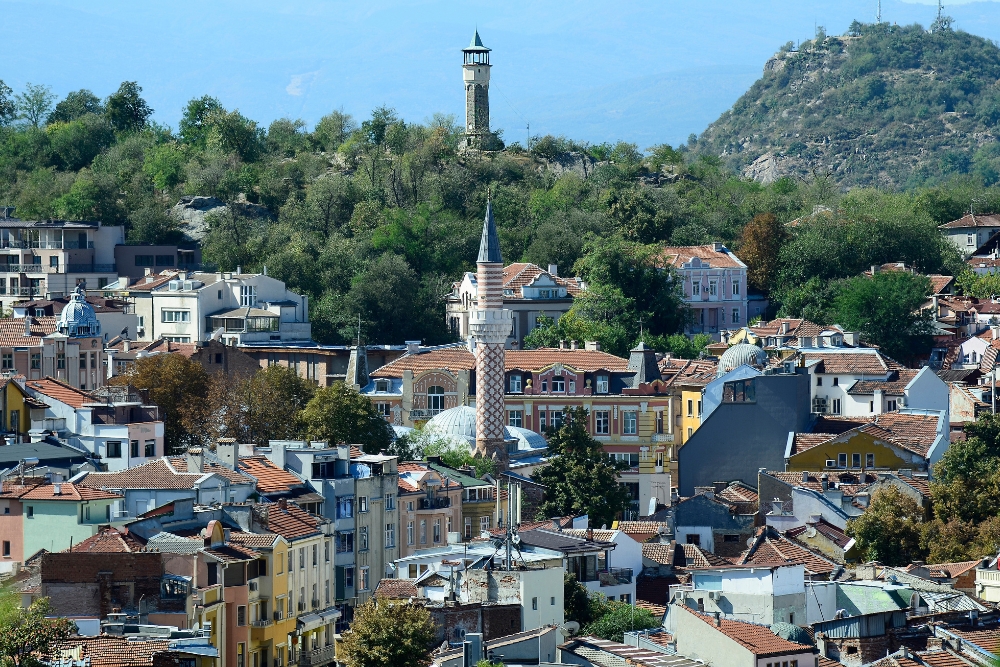
The historical layers of Plovdiv reflect a fascinating blend of Thracian and Roman influences. The city seamlessly combines remnants of Thracian settlements with the grandeur of Roman architecture, creating a unique cultural heritage. This blend of historical influences makes Plovdiv a captivating destination for those interested in ancient history.
From the Thracian civilization to Roman conquerors, Plovdiv’s historical layers provide a captivating insight into the city’s ancient history. Exploring the archaeological sites and landmarks allows visitors to appreciate the diverse cultural heritage that has shaped Plovdiv throughout the centuries.
| Thracian Civilization | Roman Architecture | Historical Layers of Plovdiv |
|---|---|---|
| 6th century BCE settlement by the Thracians | Legacy of impressive Roman architecture and infrastructure | Blend of Thracian and Roman influences |
| Evidence of Thracian civilization in archaeological sites | Well-preserved Roman structures and ruins | Showcases the city’s diverse cultural heritage |
| Ancient roots of Plovdiv’s history | Influence of Roman conquest and rule | Reflects the historical development of the city |
Living Testaments to the Roman Era
The Roman era left a significant mark on Plovdiv, and several well-preserved remnants serve as living testaments to this period. One of the most impressive historical sites in Plovdiv is the Roman Theater. This ancient amphitheater is considered one of the finest in the world and is still used for performances today. Visitors can marvel at the grandeur of the seating area, witness the stage where ancient plays were once performed, and admire the architectural elements that have endured the test of time.
Another remarkable site showcasing the Roman influence in Plovdiv is the Roman Stadium. This enormous stadium could accommodate over 30,000 spectators during its prime. Today, visitors can explore the ruins and envision the excitement that once filled the stands. These two iconic landmarks provide a captivating glimpse into the cultural and historical significance of the Roman era in Plovdiv.
Places to See in Plovdiv Bulgaria
In the charming city of Plovdiv, numerous must-visit places offer a truly immersive experience in Bulgaria’s rich history and cultural heritage. From the picturesque Plovdiv Old Town to the spiritual oasis of Bachkovo Monastery, here are some of the top attractions to explore:
The Plovdiv Old Town
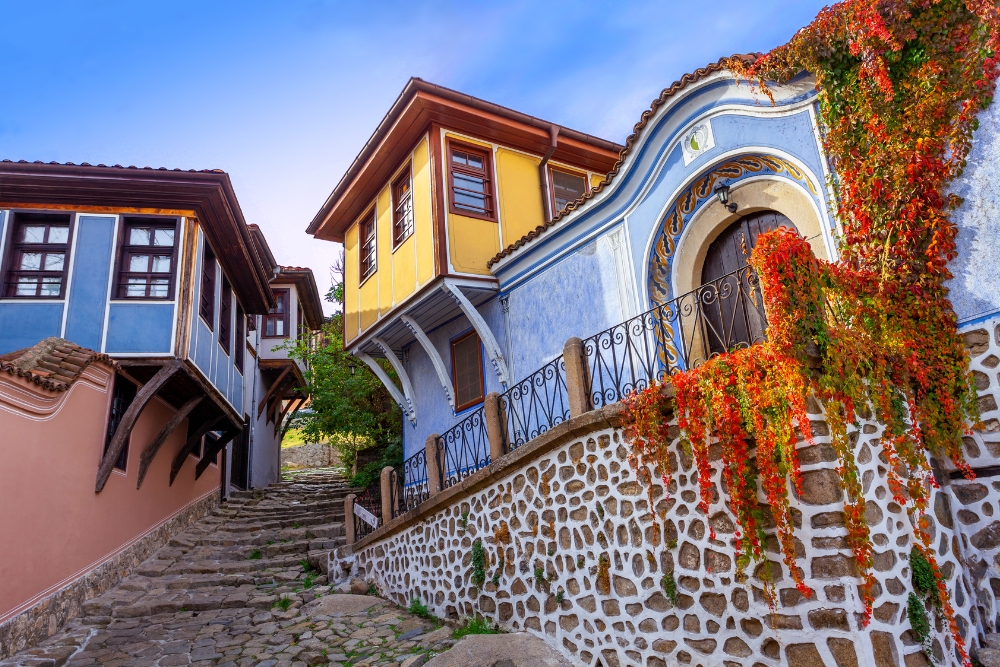
The Plovdiv Old Town, also known as Ancient Plovdiv, is a UNESCO World Heritage site that transports visitors back in time. Wander through its narrow cobblestone streets and marvel at the well-preserved historic architecture. Admire the colorful houses from the National Revival Period, which add a vibrant touch to the Old Town’s charm. Take your time to explore the quaint shops, galleries, and hidden courtyards, and you’ll truly feel the essence of Plovdiv’s past.
Bachkovo Monastery
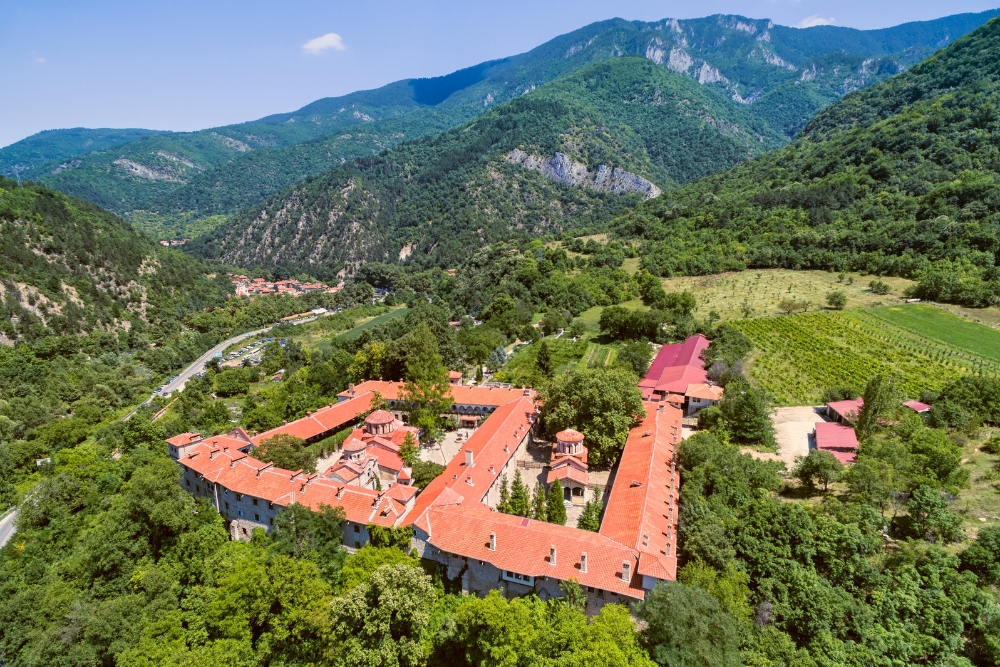
Located just a short distance from Plovdiv, Bachkovo Monastery is a true gem of Bulgarian Orthodox spirituality. Dating back to the 11th century, this monastery is renowned for its breathtaking frescoes that adorn the walls of the main church. Step inside and marvel at the intricate artwork that tells stories of religious devotion and cultural significance. Take a moment to soak in the peaceful surroundings and feel the spiritual presence that has captivated visitors for centuries.
Ancient Roman Theatre in Plovdiv
The ancient Roman theatre in Plovdiv is a remarkable archaeological site showcasing the city’s rich history and cultural heritage. Dating back to the Roman period, it is one of the best-preserved ancient theatres in the world. Built in the 2nd century AD, the theatre was originally used for various performances, including theatrical plays, musical concerts, and gladiatorial contests.
It could accommodate up to 7,000 spectators, making it one of the largest theatres in the Roman Empire. The site was rediscovered in the 1970s during excavations, and extensive restoration work has been carried out to preserve and showcase this historical treasure.
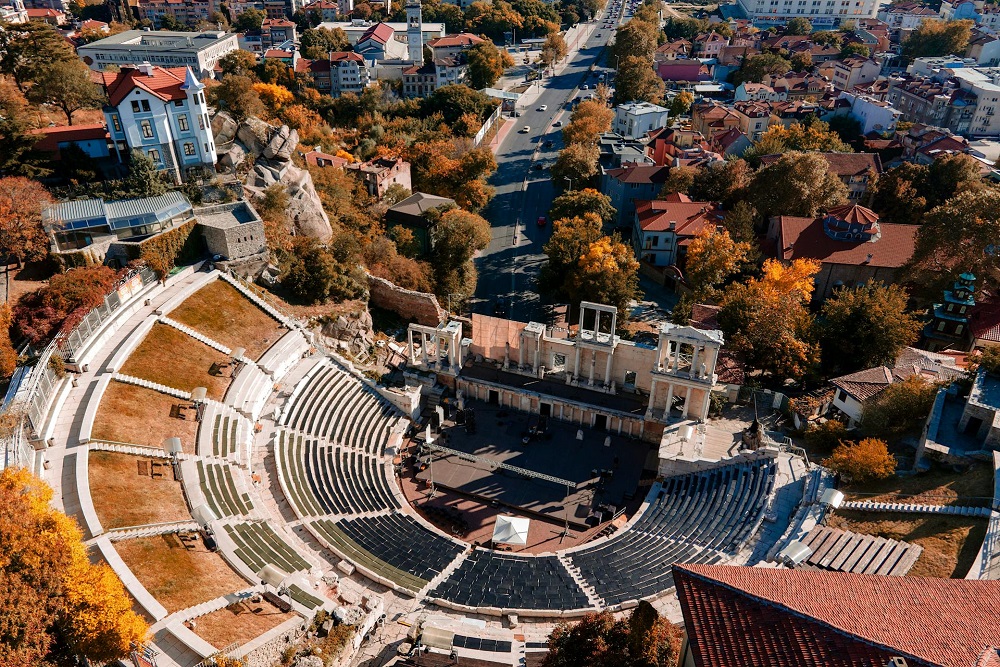
The ancient theatre in Plovdiv is a magnificent architectural structure and a symbol of the city’s cultural identity. Situated on the southern slope of the Three Hills, it offers breathtaking panoramic views of Plovdiv’s old town. Visitors can marvel at the well-preserved semicircular seating area, the stage, and the orchestra pit.
The theatre’s impressive acoustics are still evident today, making it a popular venue for various cultural events and performances, such as the annual International Festival of Opera and Ballet.
Additionally, the theatre is surrounded by a park, providing a tranquil and picturesque setting for visitors to explore and relax. The ancient theatre in Plovdiv is a testament to the city’s rich past and continues to be a vibrant part of its cultural scene.
Plovdiv Roman Stadium
The Plovdiv Roman Stadium, also known as the Ancient Stadium of Philippopolis, is a remarkable archaeological site in Plovdiv, Bulgaria. It is one of the best-preserved ancient stadiums in the world and holds great historical significance. The stadium was built during the 2nd century AD and was primarily used for various sporting events and gladiatorial contests.
Its construction was a testament to the Roman engineering skills of that era. The stadium had a capacity of about 30,000 spectators and was designed in a horseshoe shape, with stone seats arranged in tiers.
The track was made of marble and had a length of around 180 meters, while its width was about 30 meters. The Plovdiv Roman Stadium is an architectural marvel and provides valuable insights into ancient Roman culture and the importance of sports in society during that time.
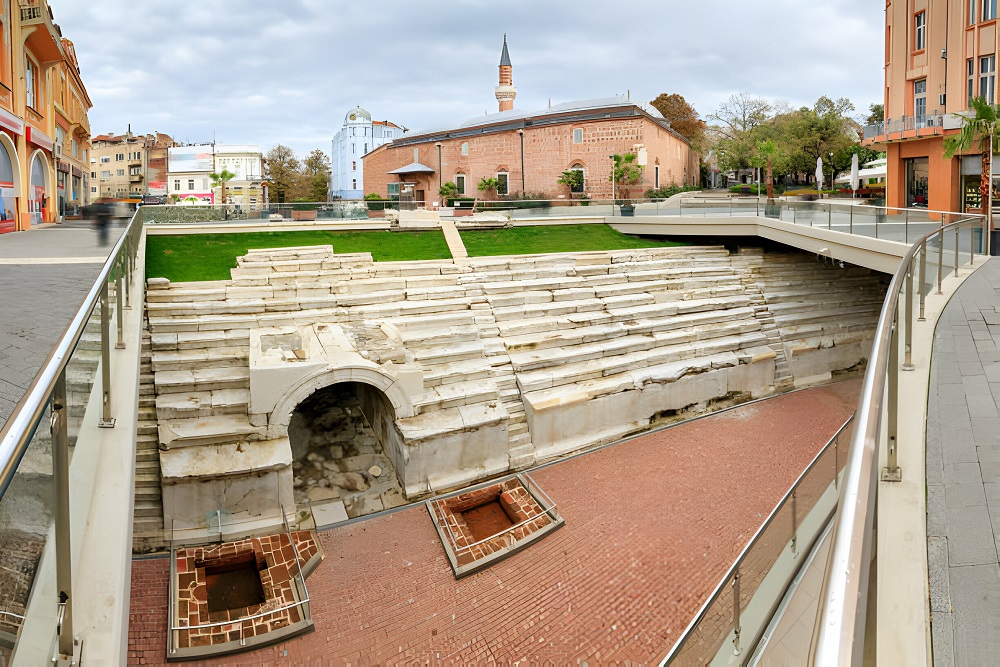
Today, the Plovdiv Roman Stadium is a prominent tourist attraction, allowing visitors to explore its grandeur and immerse themselves in the rich historical context. The site underwent significant restoration efforts to preserve its original form and provide a comprehensive understanding of its past. It offers a unique opportunity to witness the ancient Roman architectural techniques and gain insight into the daily lives of Philippopolis’s people.
The stadium has become a cultural landmark for Plovdiv and acts as a bridge between the past and the present. It also serves as a venue for various cultural events, concerts, and performances, making it a vibrant and active part of the city’s contemporary life. The Plovdiv Roman Stadium is a testament to the enduring legacy of the Roman Empire. It serves as a reminder of the importance of preserving historical sites for future generations to appreciate and learn from.
The Clock Tower of Plovdiv
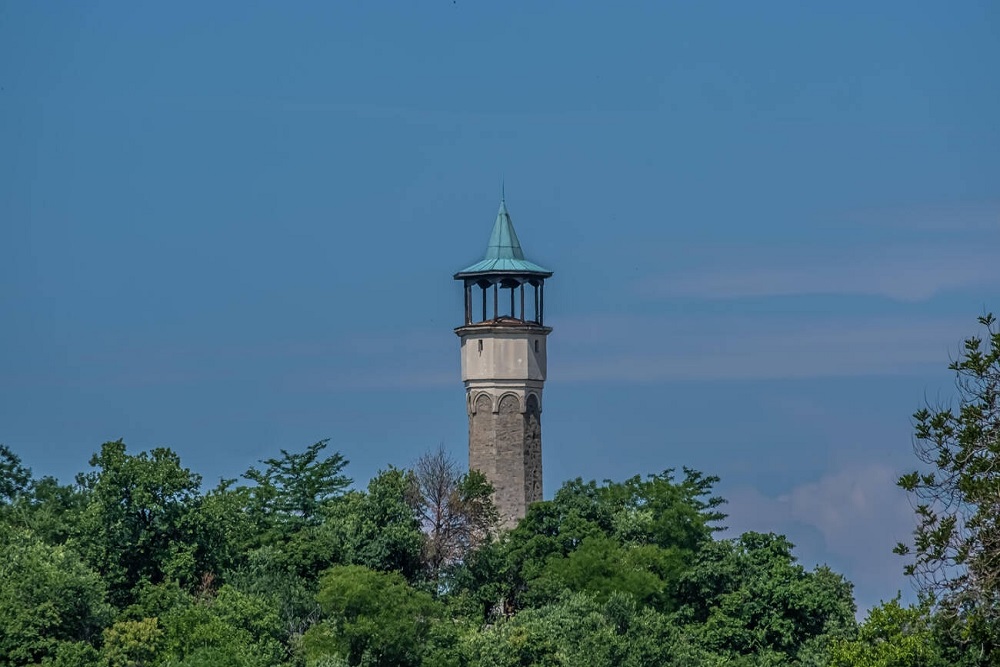
The Clock Tower of Plovdiv is a historic landmark in the heart of Plovdiv, Bulgaria. Dating back to the 14th century, it is one of the most significant symbols of the city’s rich history. The clock tower stands proudly at a height of 16 meters and is considered the tallest in Bulgaria. Its architectural design showcases a unique blend of Ottoman and European influences, reflecting the region’s diverse cultural heritage.
The Clock Tower of Plovdiv has witnessed numerous historical events throughout its existence. Originally built as part of the city’s defensive fortifications, it was a lookout tower to protect against potential threats. Over the centuries, the tower underwent several renovations and restorations to preserve its historical significance. Today, visitors can climb the tower’s narrow staircase to reach the observation deck, offering breathtaking panoramic city views. With its intricate mechanisms, the clock itself continues to mark the passage of time as a reminder of the city’s enduring legacy.
In recent years, the Clock Tower of Plovdiv has become a popular tourist attraction, drawing visitors worldwide. The tower’s historical value and unique architectural features make it a must-see destination for history enthusiasts and architecture aficionados alike. Additionally, its central location within the city makes it easily accessible for tourists exploring the vibrant streets of Plovdiv. The clock tower is a testament to the city’s rich cultural heritage and a proud symbol of Plovdiv’s past and present.
When visiting Plovdiv, include these must-visit places in your itinerary. Immerse yourself in the rich history, architectural wonders, and spiritual significance that Plovdiv has to offer. Each attraction will leave you with a deeper appreciation for the ancient city of Plovdiv, Bulgaria.
Conclusion
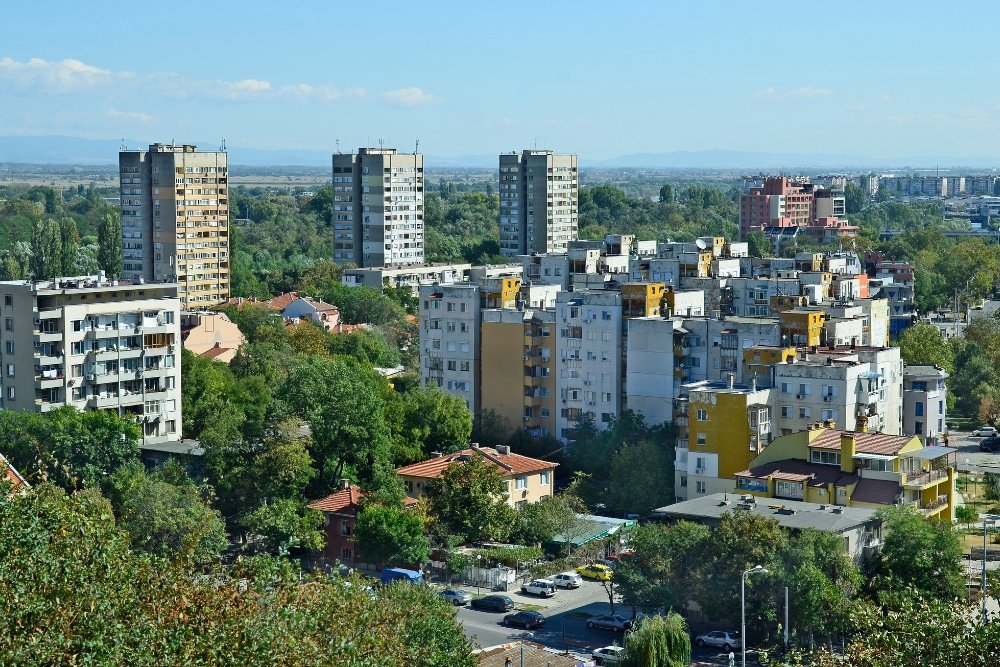
Plovdiv is a captivating city that offers a glimpse into Europe’s ancient history. Its well-preserved historical sites and rich cultural heritage make it a top destination for travelers seeking to explore Bulgaria’s history and uncover its cultural treasures. As Europe’s oldest continuously inhabited city, Plovdiv holds a unique place in the continent’s ancient past.
Visitors to Plovdiv can immerse themselves in the city’s vibrant atmosphere while exploring its Old Town, a UNESCO World Heritage site famous for its historic architecture and colorful houses. Wandering through the Old Town’s narrow cobblestone streets, visitors will be transported to a bygone era, surrounded by centuries of history.
But Plovdiv’s allure extends beyond its charming streets. The city has remarkable ancient ruins, including the awe-inspiring Roman Theater and the grand Roman Stadium. These well-preserved landmarks offer a glimpse into the grandeur and cultural significance of the Roman era in Plovdiv, captivating visitors with their architectural splendor.
To truly discover the treasures of Europe’s oldest continuously inhabited city, plan a visit to Plovdiv. Whether you’re a history enthusiast, a culture lover, or someone seeking a unique travel experience, this ancient city in Europe will captivate your senses and leave you with memories that will last a lifetime.

